High resolution Fourier Stress Diffractometer

1 - Moderator
2 - Curved neutron guide
3 - Fourier chopper
4 - Straight neutron guide
5 - Backscattering detectors
6 - 90°- detectors
7 - Sample position
8 - PC based experiment control and data acquisition system
9 - Local Ethernet network for data transfer
Scientific supervisor:
Dr. Gizo Bokuchava
tel. +7 (49621) 6-52-73
e-mail: This email address is being protected from spambots. You need JavaScript enabled to view it.
Instrument Responsible:
Papushkin Igor
Russia, Moscow reg., Dubna, Joliot-Curie str., 6
tel. +7 (49621) 6-21-33
e-mail: This email address is being protected from spambots. You need JavaScript enabled to view it.
Address:
Frank Laboratory of Neutron Physics
Joint Institute for Nuclear Research
Joliot-Curie Str. 6
141980 Dubna, Moscow region, Russia
Main research areas
Investigations of internal mechanical stresses in materials are of current interest from both fundamental and applied points of view.
The respective scientific research is usually targeted at studying deformations and microdeformations in crystalline materials arising during structural phase transitions, deformations formed in multiphase systems, as well as the determination of characteristic crystallite sizes and dislocation density in relation to internal stresses.
The related applied research is aimed at determining deformations and stresses in industrial products with the subsequent formulation of technological recommendations. It includes, for example, experimental determination of residual stresses arising after various technological operations (welding, rolling, annealing, quenching, etc.), deformations arising under the action of cyclic (mechanical and thermal) loads and radiation exposure (including effects of neutron irradiation on martensitic transformations), hydrogenation, etc.
Also, a rapidly developing area of research is the study of new types of materials (composites, gradient materials, reinforced systems, cermets, shape-memory alloys, etc.) in order to determine their suitability for use in certain industrial products.
Main parameters
Table 1. FSD main parameters
|
Curved Neutron Guide:. |
Mirror with Ni Coating |
|
length |
19 m |
|
curvature radius |
2864.8 m |
|
Straight neutron guide: |
Mirror with Ni Coating |
|
length |
5.01 m |
|
Neutron beam size at the sample position (variable) |
(0 ÷ 10) ´ (0 ÷ 75) mm |
|
Moderator–sample distance |
28.14 m |
|
Chopper–sample distance |
5.55 m |
|
Fourier chopper (disk): |
High-strength Al Alloy |
|
outer diameter |
540 mm |
|
single slit width |
0.7 mm |
|
number of slits |
1024 |
|
maximum speed of rotation |
6000 rpm |
|
maximum frequency of neutron beam modulation |
102.4 kHz |
|
Thermal neutron pulse width: |
Water Moderator |
|
in the low-resolution mode (TOF) |
340 µs |
|
in the high-resolution mode (RTOF) |
9.8 µs |
|
Neutron flux at the sample position: |
|
|
- without Fourier chopper |
1.8×× 106 neutron/cm2×sec |
|
- with Fourier chopper |
3.7×× 105 neutron/cm2×sec |
|
Wavelength range l |
0.9 ÷ 8 Å |
|
Detectors: |
|
|
2q = 140° (backscattering) |
6Li, with geometrical TOF focusing |
|
2q = ± 90° |
ZnS(Ag), with combined electronic and geometrical TOF focusing |
|
Detector resolution Dd/d (at d = 2 Å): |
|
|
2q = 140° (backscattering) |
2.3 × 10−3 |
|
2q = ± 90° |
4.0 × 10−3 |
|
dhkl range: |
|
|
2q = 140° (backscattering) |
0.51 ÷ 5.39 Å |
|
2q = ± 90° |
0.63 ÷ 6.71 Å |

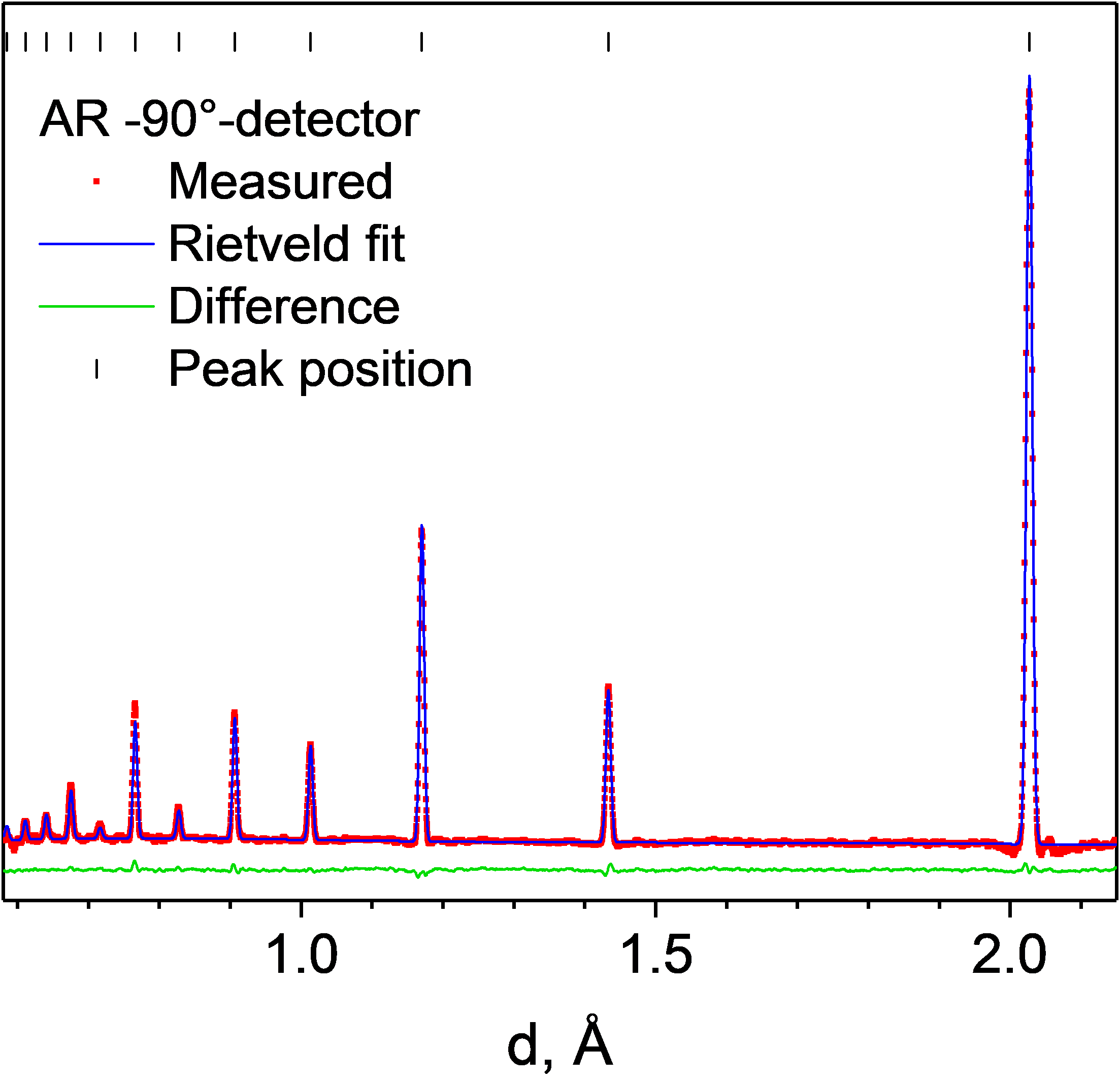
(a) (b)
Fig. 1. Neutron diffraction patterns measured from the a-Fe standard sample using BS (a) and 90°-detector ASTRA (b) at the maximal Fourier chopper speed Ωmax = 6000 rpm. The measured data points, full profile calculated by the Rietveld method, and the difference curve are shown.
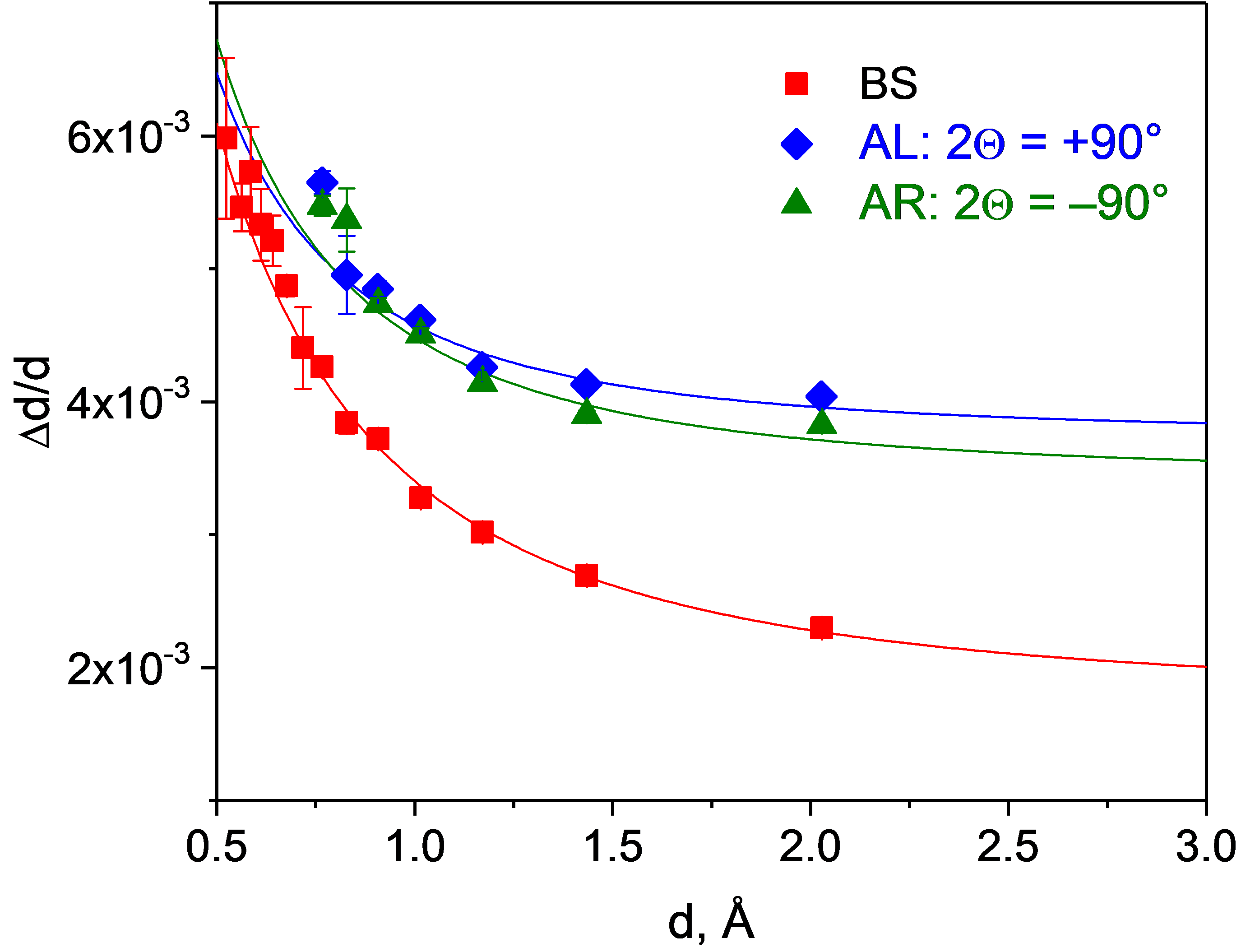
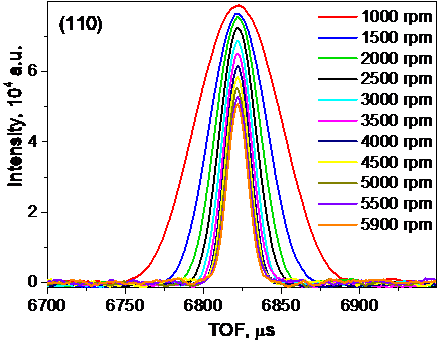
(a) (b)
Fig. 2. (a) FSD resolution function measured at maximal Fourier chopper speed Ωmax = 6000 rpm for backscattering detector BS (2θ = 140°) and both ASTRA detectors (2θ = ± 90°). (b) Diffraction peak shape dependence vs. maximal Fourier chopper speed Vmax.
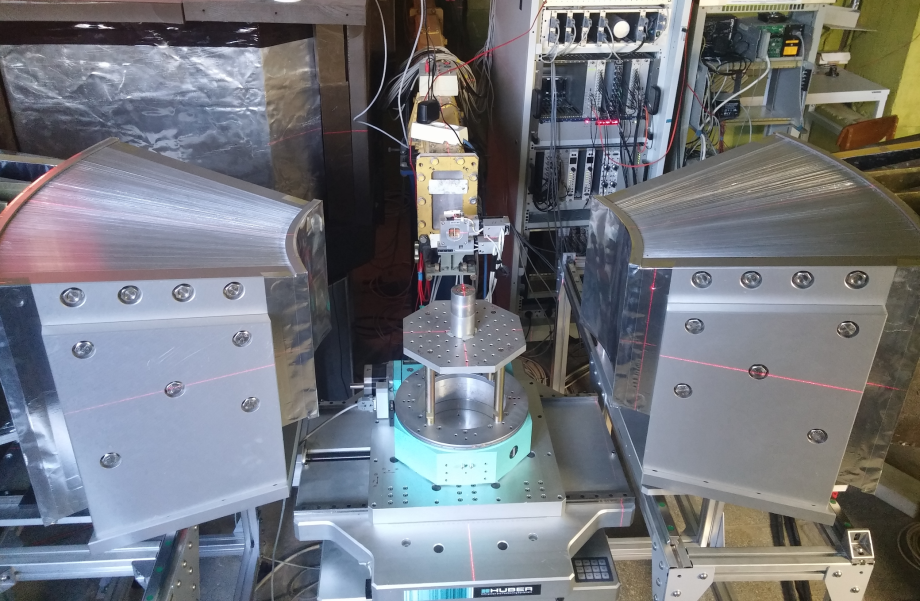
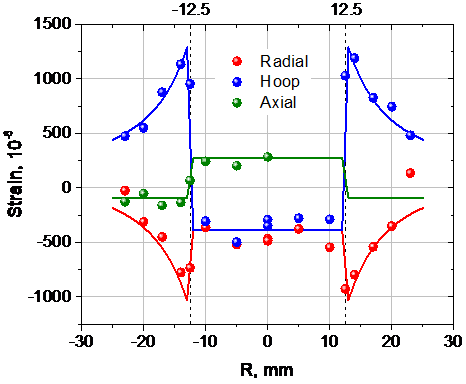
(a) (b)
Fig. 3. (a) Sample place at the FSD diffractometer. Huber goniometer, the diaphragm at the incident beam, and two radial collimators at the scattered beams are visible; (b) Residual lattice strain measured in VAMAS shrink-fit ring and plug standard sample (set #1).
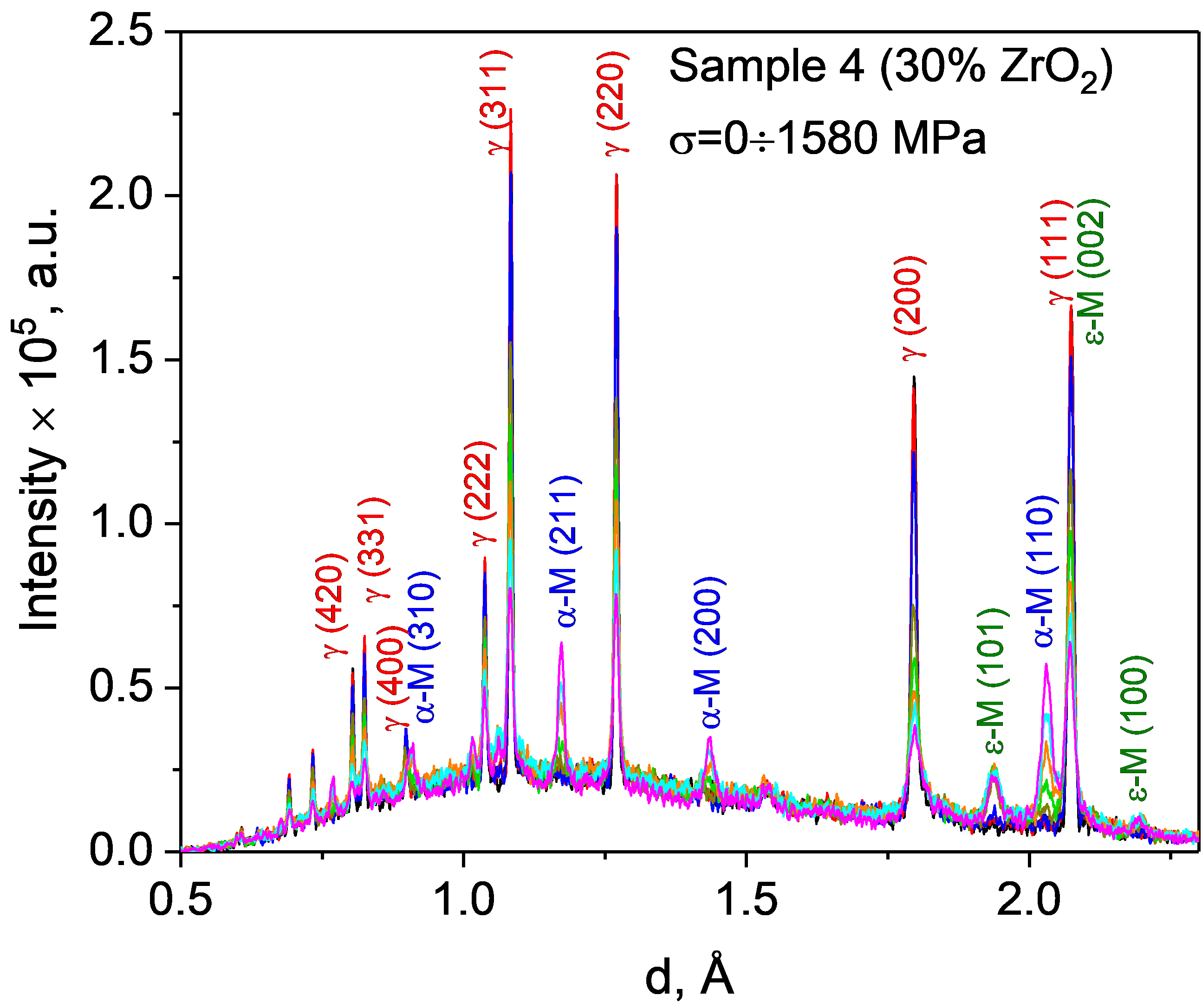
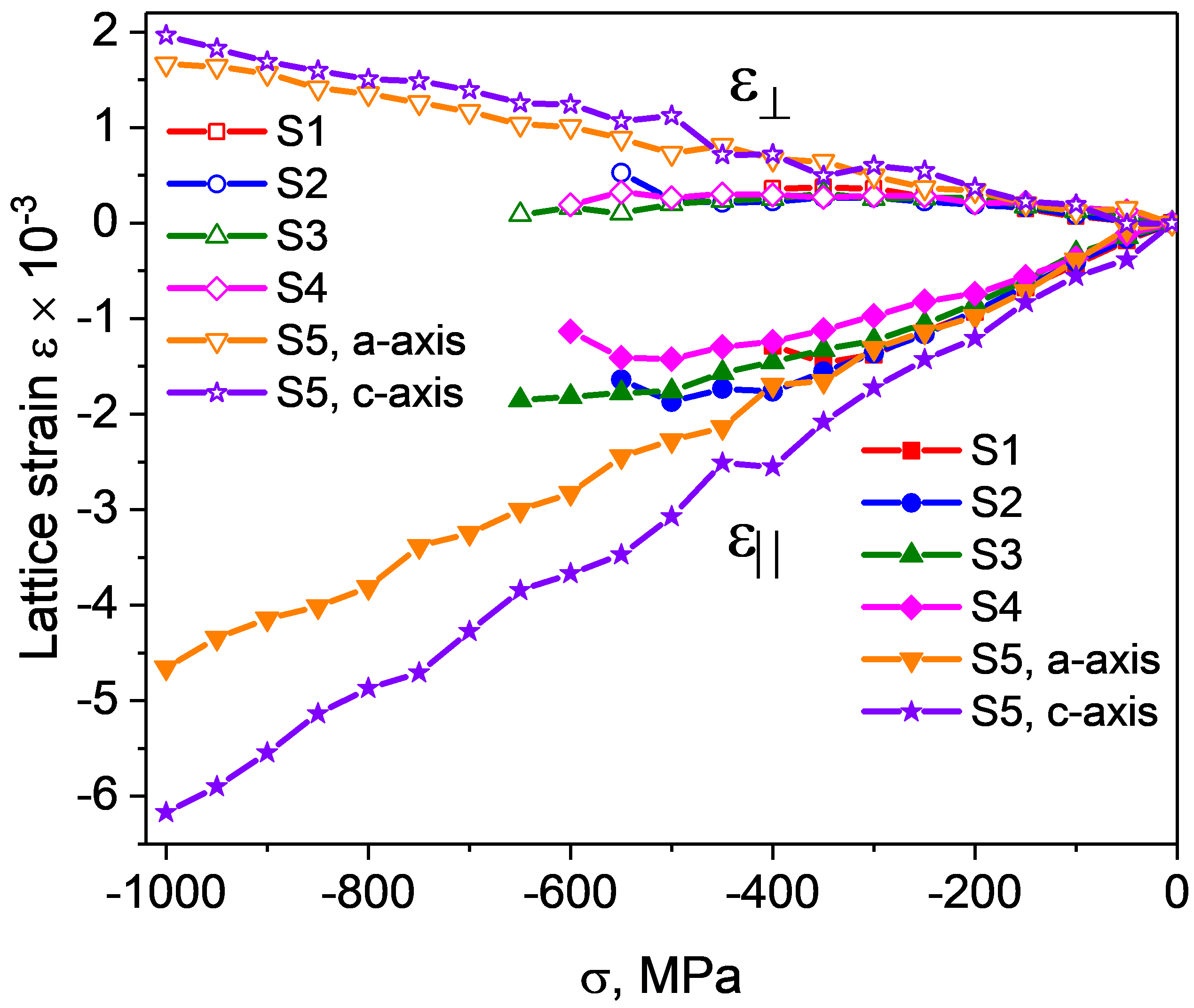
(a) (b)
Fig. 4. (a) The evolution of the diffraction pattern of TRIP-composite as a function of plastic deformation (sample S4, σ = 0 ÷ 1580 MPa). The Miller indices of the main peaks of austenitic and α'- and ε-martensitic phases are indicated; (b) Longitudinal and transverse lattice strain determined from the relative change in the lattice parameter for the austenitic matrix of the TRIP-composite for samples S1-S4 and for the ceramic sample S5 (100% ZrO2).
Sample environment
- 4-axis (x,y,z,rotation) "HUBER" goniometer for precise movement of the sample;
- two multi-slit radial collimators with spatial resolution of 1.8 mm;
- testing machine LM-29 for in situ sample studies under external load (up to 29 kN) and elevated temperature (up to 800°C);
- mirror furnace "MF2000" (room temperature < T < 1000°C);
- automated diaphragm with variable aperture for the incident neutron beam.
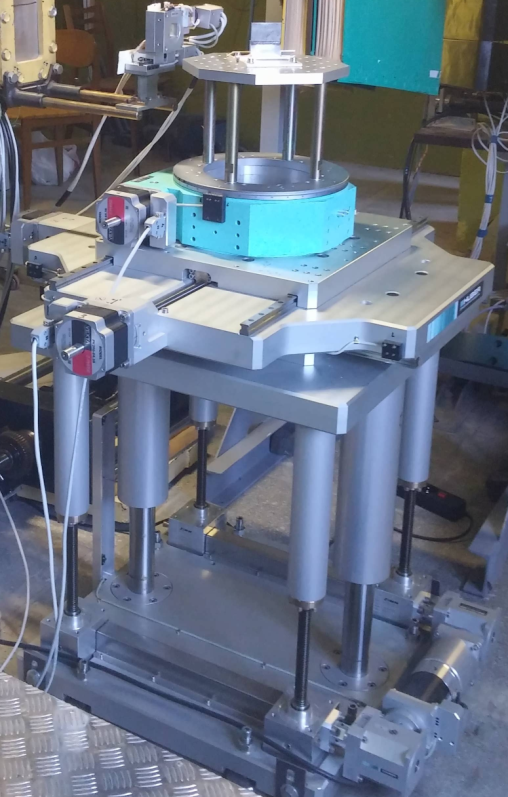
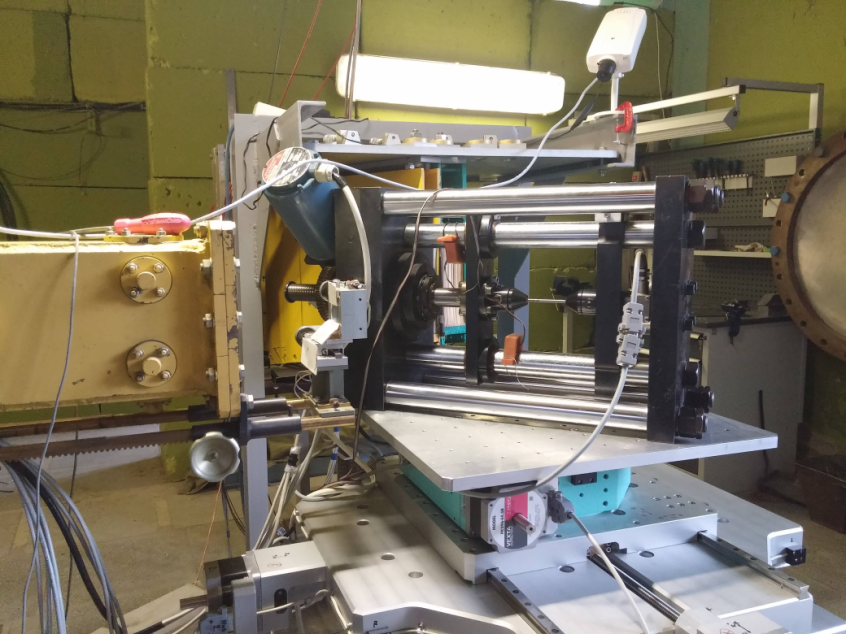
(a) (c)
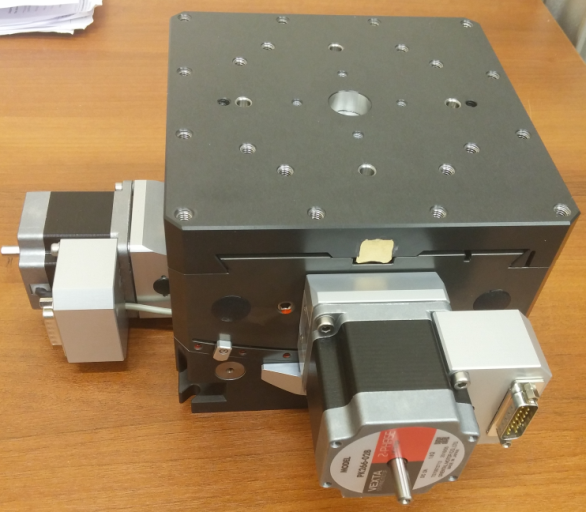
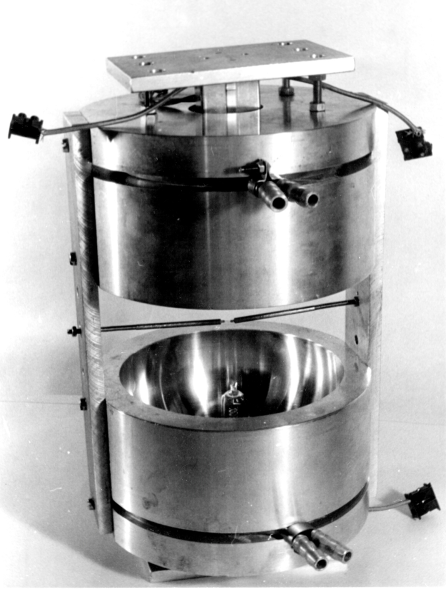
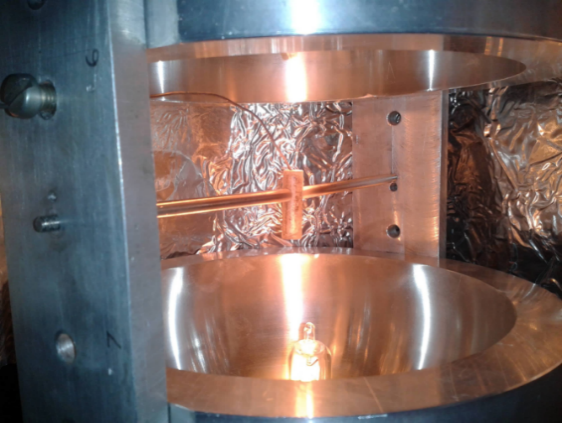
(b) (d)
Fig. 5. (a) Four-axis HUBER goniometer for precise sample positioning (max. load 300 kg); (b) Additional goniometer head with ± 15°-tilt; (c) Uniaxial mechanical loading machine LM-29 (Fmax = 29 kN, Tmax = 800 °C) installed on the HUBER goniometer during the experiment; (d) Water-cooled mirror furnace (P = 1 kW, Tmax = 1000 °C). A sample with a thermocouple heated during the experiment is shown.
Publications
- Gizo Bokuchava, Correlation RTOF diffractometry at long-pulse neutron source: I. Data acquisition in list-mode, Nuclear Instruments and Methods in Physics Research A, 2020, Vol. 964, 163770. https://doi.org/10.1016/j.nima.2020.163770
- Gizo Bokuchava, Correlation RTOF diffractometry at long-pulse neutron source: II. Analysis of frequency windows and diffraction peak profiles, Nuclear Instruments and Methods in Physics Research A, 2020, Vol. 983, 164612. https://doi.org/10.1016/j.nima.2020.164612
- Gizo Bokuchava, Peter Petrov, Study of residual stresses and microstructural changes in Charpy test specimens reconstituted by various welding techniques, Metals, 2020, Vol. 10, Issue 5, 632. https://doi.org/10.3390/met10050632
- Gizo Bokuchava, Neutron Fourier Stress Diffractometer FSD at the IBR-2 pulsed reactor, Crystals, 2018, Vol. 8, 318. http://doi.org/10.3390/cryst8080318
- G.D. Bokuchava, Yu.E. Gorshkova, I.V. Papushkin, S. Guk, R. Kawalla, Investigation of plastically deformed TRIP composites by neutron diffraction and small angle neutron scattering methods, Journal of Surface Investigation. X-ray, Synchrotron and Neutron Techniques, 2018, Vol. 12, No. 2, pp. 227-232. http://doi.org/10.1134/S1027451018020052
Г.Д. Бокучава, Ю.Е. Горшкова, И.В. Папушкин, С.В. Гук, Р. Кавалла, Исследование пластически деформированных TRIP-композитов методами нейтронной дифракции и малоуглового рассеяния нейтронов, Поверхность. Рентгеновские, синхротронные и нейтронные исследования, 2018, № 3, с. 11-17. http://doi.org/10.7868/S0207352818030034 - Gancho Genchev, Nikolay Doynov, Ralf Ossenbrink, Vesselin Michailov, Gizo Bokuchava, Peter Petrov, “Residual stresses formation in multi-pass weldment: A numerical and experimental study”, Journal of Constructional Steel Research, 2017, V. 138, pp. 633–641. https://doi.org/10.1016/j.jcsr.2017.08.017
- G.D. Bokuchava, “Materials microstructure characterization using high resolution time-of-flight neutron diffraction”, Romanian Journal of Physics, 2016, Vol. 61, No. 5-6, pp. 903-925. http://www.nipne.ro/rjp/2016_61_5-6/0903_0925.pdf
- G.D. Bokuchava, I.V. Papushkin, V.I. Bobrovskii, N.V. Kataeva, “Evolution in the Dislocation Structure of Austenitic 16Cr–15Ni–3Mo–1Ti Steel Depending on the Degree of Cold Plastic Deformation”, Journal of Surface Investigation. X-ray, Synchrotron and Neutron Techniques, 2015, Vol. 9, Issue 1, pp. 44-52. http://doi.org/10.1134/S1027451015010048
Г.Д. Бокучава, И.В. Папушкин, В.И. Бобровский, Н.В. Катаева, “Эволюция дислокационной структуры аустенитной стали Х16Н15М3Т1 в зависимости от степени холодной пластической деформации”, Поверхность. Рентгеновские, синхротронные и нейтронные исследования, 2015, № 1, с. 49-57. http://doi.org/10.7868/S020735281501004 - G.D. Bokuchava, A.M. Balagurov, V.V. Sumin, I.V. Papushkin, “Neutron Fourier diffractometer FSD for residual stress studies in materials and industrial components”, Journal of Surface Investigation. X-ray, Synchrotron and Neutron Techniques, 2010, Vol. 4, Issue 6, pp. 879-890. http://doi.org/10.1134/S1027451010060029
Г.Д. Бокучава, А.М. Балагуров, В.В. Сумин, И.В. Папушкин, “Нейтронный фурье-дифрактометр ФСД для исследования остаточных напряжений в материалах и промышленных изделиях”, Поверхность. Рентгеновские, синхротронные и нейтронные исследования, 2010, № 11, с. 9-21. http://elibrary.ru/item.asp?id=15524438 - E.S. Kuzmin, A.M. Balagurov, G.D. Bokuchava, V.V. Zhuk, V.A. Kudryashev, “Detector for the FSD Fourier diffractometer based on ZnS (Ag) /6LiF scintillation screen and wavelength shifting fiber readout”, J. of Neutron Research, Vol. 10, Number 1 (2002) 31-41. http://doi.org/10.1080/10238160290027748
- G.D. Bokuchava, V.L. Aksenov, A.M. Balagurov, V.V. Zhuravlev, E.S. Kuzmin, A.P. Bulkin, V.A. Kudryashev, V.A. Trounov, “Neutron Fourier diffractometer FSD for internal stress analysis: first results”, Proc. of the Int. Conf. on Neutron Scattering (ICNS 2001), 9-13 September 2001, München, Germany. Applied Physics A: Materials Science & Processing, v.74 [Suppl1] (2002) pp s86-s88. http://doi.org/10.1007/s003390201750


